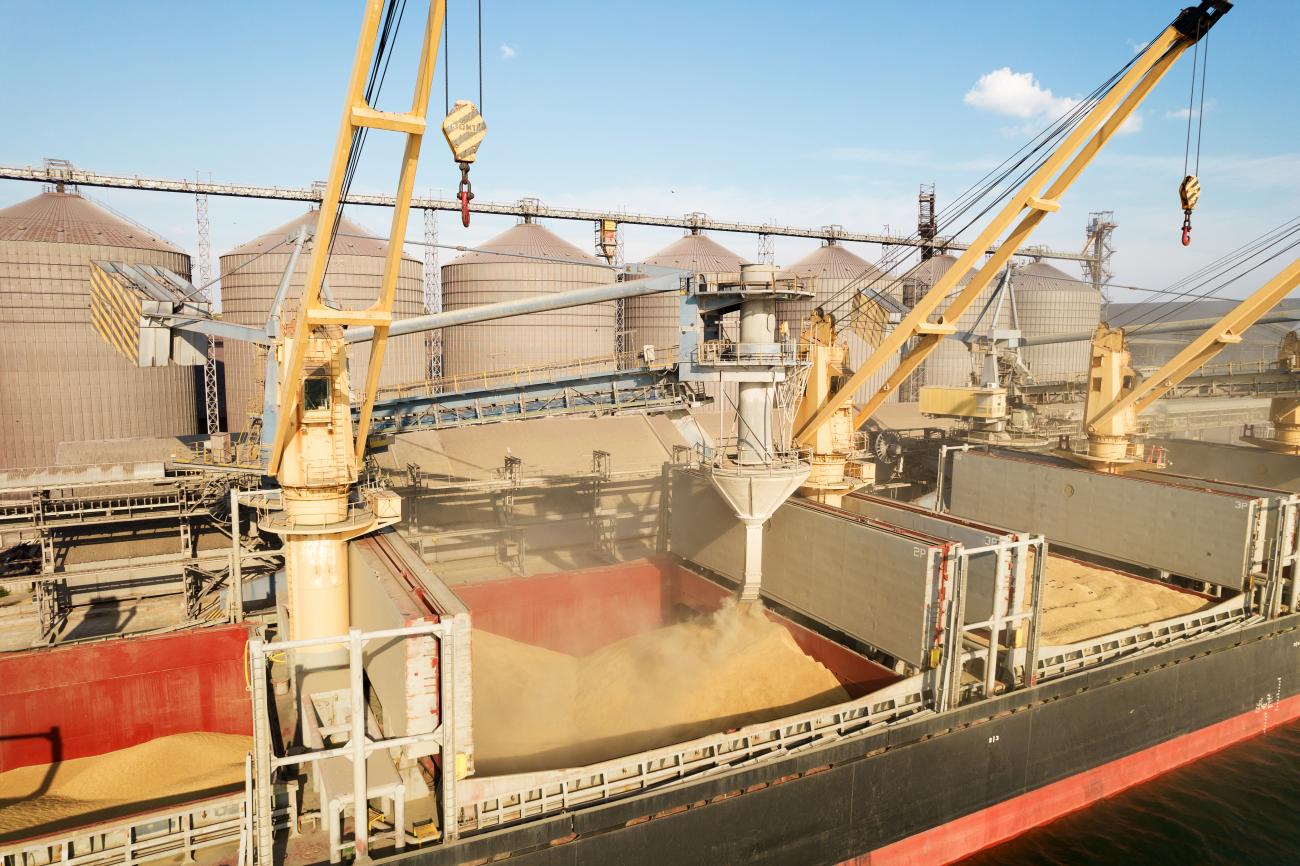Researchers at the ECI have created the world’s first modelling tool to address the inequalities in accessing international grain and oilseed markets globally.
ECI researchers, Dr Jasper Verschuur, Honorary Research Associate; Prof Michael Obersteiner, ECI Director; and Prof Jim Hall, Infrastructure Systems Lead; together with Yiorgos Vittis, International Institute for Applied Systems Analysis (IIASA), Austria; combined datasets on country-specific production costs, transport costs and trade costs, within their new Global Landed Cost Model, identifying the drivers of the “landed costs” of grains across regions.
International trade has been a major contributor to reductions in global food insecurity and food prices. Nonetheless, the global trade in grains and oilseeds is still marked by significant inequalities in access, driven by various factors that contribute to high landed costs (i.e., the total cost to produce food and transport it to warehouses in the demanding regions) for importing countries. These landed costs encompass the total expenses incurred from producing, importing, and transporting agricultural commodities.
Their findings have been published in the journal Nature Food: Heterogeneities in landed costs of traded grains and oilseeds contribute to unequal access to food. Dr Verschuur said:
A detailed breakdown of the landed cost of imported foods is not available on a global scale. This lack precludes insights into how landed costs differ geographically and which cost components drive the observed inequalities.”
Prof Jim Hall added:
This information is crucial, given the extent to which many countries rely on global trade for food security. This information can help understand why price shocks to some cost components affect countries differently and identify strategies that reduce landed costs and improve market access.”

Key drivers of unequal access to international markets include:
- Production Costs: These account for the bulk (65-90%) of landed costs in most regions, influenced by labour, machinery, fertilizers, and pesticides. Regional disparities in these factors, such as differences in labour wages or the costs of inputs like diesel, contribute to unequal access, as production costs are often higher in certain regions.
- Transport Costs: For some regions, particularly island nations or those with difficult geographic access (e.g., landlocked areas), transport costs represent a substantial part of the landed cost (more than 50% in some cases). For instance, maritime transport costs are a major burden for countries in the Pacific, while landlocked regions like sub-Saharan Africa face high hinterland transport costs.
- Tariffs and Border Compliance: In areas such as East Asia, high import tariffs contribute significantly to landed costs. These trade barriers prevent efficient market access, making imported food more expensive.
As a result, countries in sub-Saharan Africa, Central America, East Asia, and Oceania face disproportionately high landed costs due to a combination of the above factors. This then has implications for the exposure to price shocks; regions with high dependence on certain cost components (like fuel or fertilizers) are more vulnerable to global price shocks, as seen during crises like the Russian invasion of Ukraine, which affected energy, fertilizer, and transport prices globally. These price fluctuations disproportionately impact countries with already high transport or production costs.
Strategies for Reducing Unequal Access
To improve market access and reduce inequalities, the study highlights several strategies:
- Improving Trade Facilitation: Enhancing trade logistics and streamlining border compliance processes could significantly lower costs for many countries.
- Tariff Reforms: Reducing import tariffs can help ease the burden on regions where they are a significant cost factor.
- Targeted Interventions: Policies should focus on the specific cost drivers of each region. For example, landlocked regions might benefit most from improvements in overland transport infrastructure, while island nations could focus on reducing maritime shipping costs.
Limitations and Future Directions
Despite the comprehensive data collected, the analysis excludes some important cost components like marketing and profit margins, land and water use costs, and the impacts of agricultural subsidies. These factors could refine the analysis and help design more nuanced strategies. Future research could also explore the dynamic effects of price shocks, such as how domestic supply and demand adjust in response to global price shifts. Dr Verschuur said:
This study is an extension of a project at the University of Oxford looking at the infrastructure, transport and trade systems that jointly facilitate global food supply. We decided to push the frontier on estimating the different cost components involved in the delivery of food from field to customer, using both existing and new data, in particular those on detailed transport costs. The project was a truly collaborative endeavour, that derived clear added value from its interdisciplinary team of infrastructure, trade and food experts.”
In conclusion, the researchers say understanding and addressing the multiple components that drive high landed costs can help mitigate inequalities in global food access, making international food markets more equitable and resilient to global disruptions.
The study has been revered by industry colleagues. Juliana Gil, Chief Editor of the journal Nature Food, said: "Besides the interesting findings, the database presented in this study is a valuable resource. Its application to scenario analysis contributes to our understanding of shock propagation throughout international trade and of how landed costs may be lowered — two questions of direct relevance for food policy, particularly in terms of equality of access to food."
Read the full article in Nature Food: Heterogeneities in landed costs of traded grains and oilseeds contribute to unequal access to food.



